LL37 overview
LL37 is an antimicrobial peptide that plays a crucial role in innate immunity as a front line defense against infectious agents. It is produced by various cell types, including neutrophils, macrophages, and epithelial cells. LL37 exerts its antimicrobial activity by disrupting bacterial membranes, leading to bacterial death. In addition to its antimicrobial activity, LL37 has been shown to have immune-modulatory properties, including promoting wound healing, reducing cell death and promoting angiogenesis. Studies have shown that LL37 can target a range of pathogens, including bacteria, viruses, and fungi, making it a potential agent for the development of novel antimicrobial therapies. Furthermore, LL37 has been identified as a key mediator in the pathogenesis of various inflammatory and autoimmune diseases, including psoriasis, asthma, and rheumatoid arthritis. Thus, LL37 represents an essential component of the innate immune response and is a promising target for the development of therapeutics for infectious and inflammatory diseases.
LL37 Application
LL-37, also known as human cathelicidin antimicrobial peptide (hCAP-18), is a naturally occurring antimicrobial peptide found in humans. It has gained attention due to its diverse biological activities beyond its antimicrobial properties. Here are some of the known applications and functions of LL37:
1.Antimicrobial Activity: LL-37 exhibits broad-spectrum antimicrobial activity against a wide range of pathogens, including bacteria, fungi, and viruses. It can directly kill microorganisms or disrupt their membranes, making it a potential therapeutic agent for various infections.
2.Immunomodulation: LL-37 plays a crucial role in modulating the immune response. It can activate immune cells such as macrophages, dendritic cells, and mast cells, leading to the production of pro-inflammatory cytokines. Additionally, LL37 can promote wound healing by enhancing cell migration and promoting angiogenesis.
3.Anti-inflammatory Effects: Despite its pro-inflammatory properties, LL37 also possesses anti-inflammatory effects. It can dampen excessive immune responses by inhibiting the production of certain pro-inflammatory cytokines and reducing the activation of immune cells. This dual functionality suggests potential applications for LL37 in autoimmune disorders and chronic inflammatory conditions.
4.Tissue Repair and Regeneration: LL-37 has been shown to promote tissue repair and regeneration. It can stimulate the migration and proliferation of various cell types, including keratinocytes, fibroblasts, and endothelial cells, leading to wound closure and tissue healing. This property has potential applications in wound healing, tissue engineering, and regenerative medicine.
5.Cancer Research: LL-37 has been studied for its role in cancer biology. It exhibits both pro- and anti-tumor activities depending on the context. LL37 can induce tumor cell death and inhibit tumor growth in some cases, while in others, it may promote tumor progression and metastasis. Further research is needed to understand its complex interactions in different cancer types.
What is the mechanism of LL37?
The mechanism of action of LL37, also known as human cathelicidin antimicrobial peptide (hCAP-18), involves its interactions with microbial pathogens, host cells, and the immune system. Here are some key aspects of LL37’s mechanism:
1.Disruption of Microbial Membranes: LL-37 exerts its antimicrobial activity by interacting with the membranes of bacteria, fungi, and viruses. It possesses an amphipathic structure, meaning it has both hydrophobic and hydrophilic regions. This structure allows LL37to bind to the negatively charged microbial membranes, disrupt their integrity, and form pores or holes. This membrane disruption leads to leakage of cellular contents and ultimately kills the microorganisms.
2.Immunomodulation: LL-37 has immunomodulatory effects, influencing the immune response. It can interact with various immune cells, such as macrophages, dendritic cells, and mast cells. LL37binding to specific receptors on these cells can induce the production of pro-inflammatory cytokines, such as tumor necrosis factor-alpha (TNF-α), interleukin-1 beta (IL-1β), and IL-6. This activation of immune cells contributes to the innate immune response against pathogens.
3.Chemotaxis and Cell Recruitment: LL-37can attract immune cells to the site of infection or inflammation. It acts as a chemoattractant for neutrophils, monocytes, and T cells, promoting their migration and recruitment to the site of infection. This aids in the clearance of pathogens and the initiation of an immune response.
4.Modulation of Inflammatory Responses: LL-37exhibits complex interactions with the immune system, which can result in both pro-inflammatory and anti-inflammatory effects. It can stimulate the production of pro-inflammatory cytokines, but it also possesses anti-inflammatory properties by inhibiting the release of certain pro-inflammatory mediators. The balance between these effects depends on the concentration and context of LL37in the specific microenvironment.
5.Wound Healing and Tissue Repair: LL-37plays a role in wound healing and tissue repair processes. It can promote the migration and proliferation of various cell types, including keratinocytes, fibroblasts, and endothelial cells. This enhances wound closure, angiogenesis (formation of new blood vessels), and the synthesis of extracellular matrix components, contributing to tissue regeneration.
It’s important to note that the mechanism of LL37 can vary depending on the context and specific conditions, and ongoing research is further uncovering its multifaceted actions and potential therapeutic applications.
How to buy LL-37?
Usually we have regular stock products, if you are interested in the product, please contact us for the latest stock list.
We have very safe special transportation line, LL37 Peptide products can be sold to Europe, USA,Canada, Australia and so on.
Our payment method is Bitcoin USDT and BankAccount.








 Miracle Retatrutide: 24.2% weight loss after 48 weeks, expected to reverse fatty liver disease
Miracle Retatrutide: 24.2% weight loss after 48 weeks, expected to reverse fatty liver disease HCG peptide
HCG peptide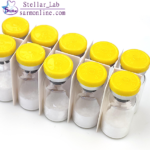 Tirzepatide peptide
Tirzepatide peptide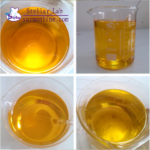 Tri Tren 180 liquid steroids
Tri Tren 180 liquid steroids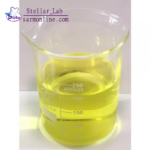 Test Blend 500 liquid steroids
Test Blend 500 liquid steroids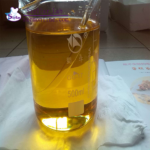 Test 400 liquid steroids
Test 400 liquid steroids BPC-157peptide
BPC-157peptide TB500 Peptide
TB500 Peptide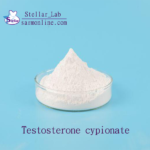 Testosterone cypionate/Depo-Testosterone
Testosterone cypionate/Depo-Testosterone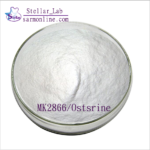 Ostarine MK2866
Ostarine MK2866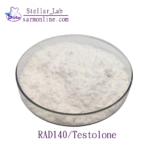 Testolone RAD140
Testolone RAD140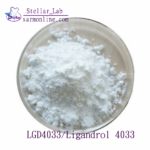 Ligandrol LGD4033
Ligandrol LGD4033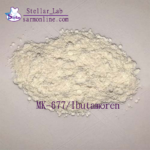 Ibutamoren MK677
Ibutamoren MK677 Thymalin
Thymalin KissPeptin 10
KissPeptin 10 Hexarelin
Hexarelin